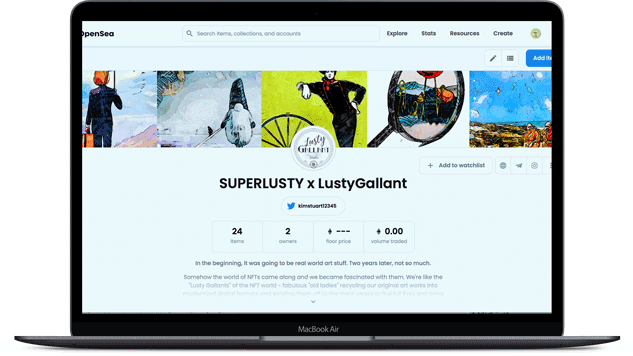Welcome to the world of Web3 – the next generation of ideas for the internet and beyond.
If you’re trying to figure out how Solidity programming, NFT drops, and blockchain work, then you’re in the correct place.
NFTs have taken the world by storm, and most people are struggling to figure out what an NFT actually is; the idea of how to create one – or many – by utilizing Solidity programming and smart contracts on blockchains like Ethereum (ETH), Solana, Polygon, and more has captured our collective imagination in a way that very little else has in the past two years.
No worries, though. If you haven’t heard, the “Two Old Ladies of NFT” are on top of things. We’ve been busy learning Solidity programming, designing modules and site templates for NFT collection drops, and working on smart contracts on the blockchain for generative art, collectibles, authentication certification and lots more; all utilizing various cryptocurrencies like ETH, Solana, Polygon, Tezos, Flow, and ImmutableX.
Old ladies. Nice. What exactly is an NFT again?
NFT stands for non-fungible token. It’s a fancy way of saying that we have something that is unique and can’t be swapped for another item of the same type. In real world applications, it works more like a certificate of authenticity than anything else – it proves the ownership of a piece of digital art, a pair of sneakers, the contents of a video, and so on.
Smart contracts, written in the Solidity programming language, tell the world who owns an NFT, along with who the previous owners were, and the price of the item each time it’s sold or transferred to a new owner. NFTs and crypto currency are stored in digital wallets; there are many flavors of crypto wallets, and some offer the ability to transact in multiple digital currencies – some even offer the ability to tie real world “currency” such as Mastercard to a digital wallet full of cryptocurrency.
How do I make an NFT?
Well, that depends on how many copies of your item you want to create, whether or not your item is generative or static, where you want to sell or give away your item – really the possibilities are almost endless, and it’s impossible to tell you what the best path forward is without knowing the details of your particular project.
Solidity programming is the language of Web3, and determines how contracts are written and what platforms they will utilize going forward. These smart contracts are also used to generate residual commission for creators or producers who are using NFTs as the method of distribution for their creations.
LustyGallant.com is one example of an NFT website we created to use as the back end for a variety of collections distributed across multiple NFT marketplaces such as:
OK, I want to make an NFT collection with you. What’s next?
It’s a pretty simple process. Fill out the form at the bottom of the page, we’ll contact you to set up a call, and we’ll send you a list of questions that we will need answered in order to set up your framework and get you started. Depending on the level of complexity and the number of items you want to drop, the specific solution – Solidity programming, smart contract, content hosting, Discord server setup, and more are all services that we offer.
What about Web3 and the metaverse?
We’ve got you covered there as well. Our coders can build applications that span well more than just Solidity programming – whether you want to create an entire segment of the metaverse for yourself or just market products that are usable in specific metaverse settings, we’re happy to bid on your project and give you advice about how to do it correctly from the beginning. We offer consulting services as well as graphic design, programming in multiple languages, template coding, Web3 hosting, Azure instances, and pretty much anything you could possibly need to launch your idea and see it in real time.

